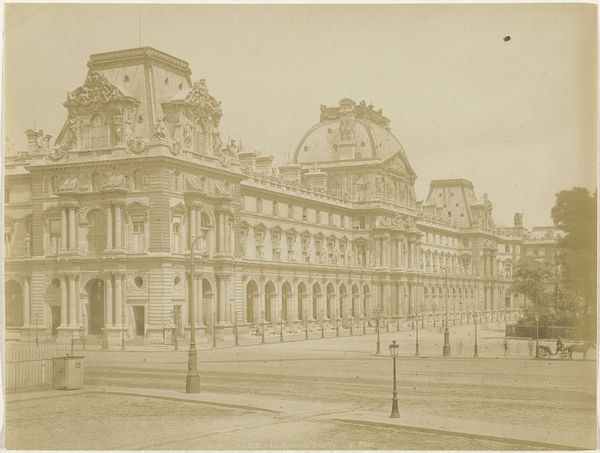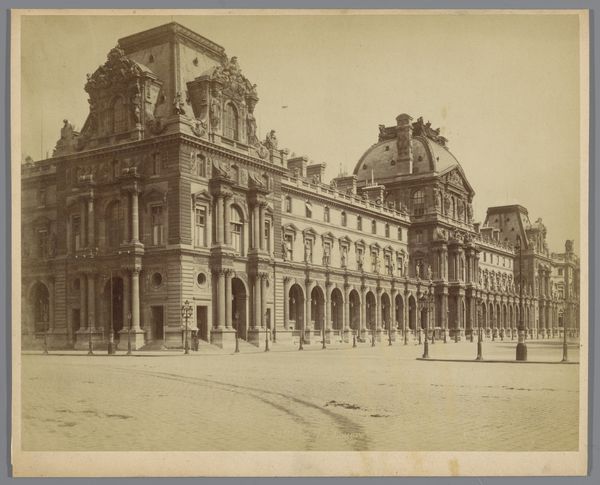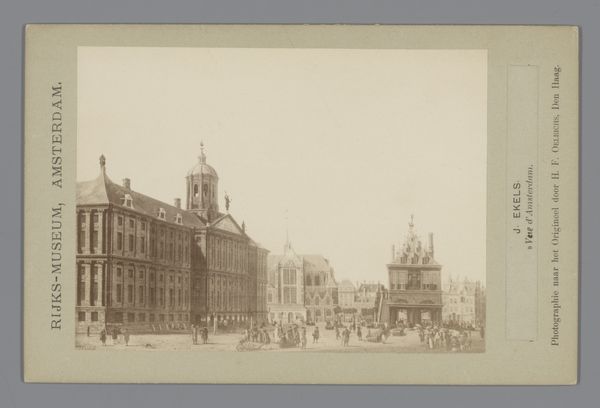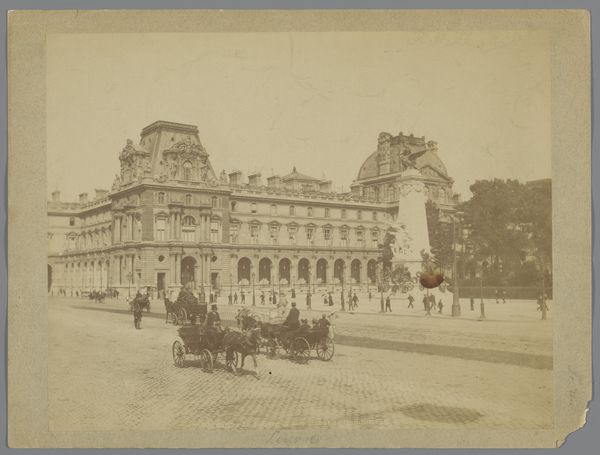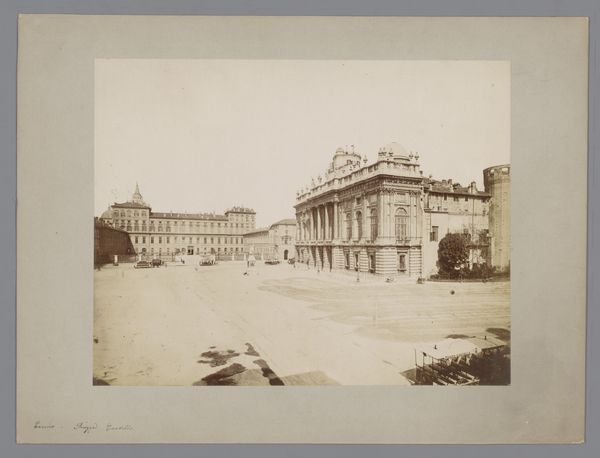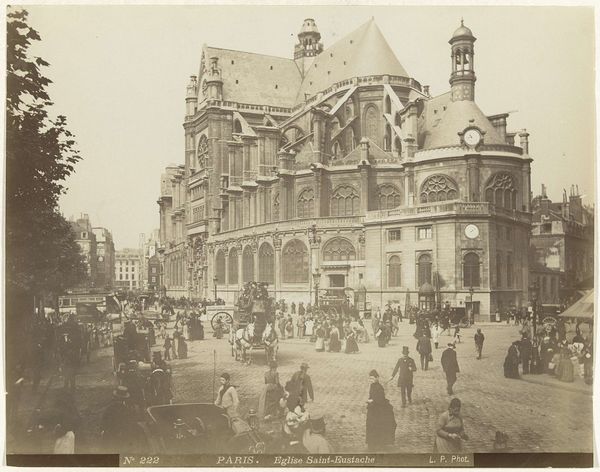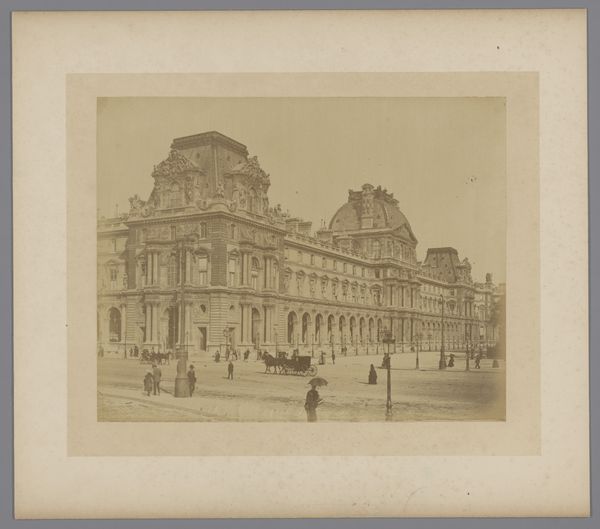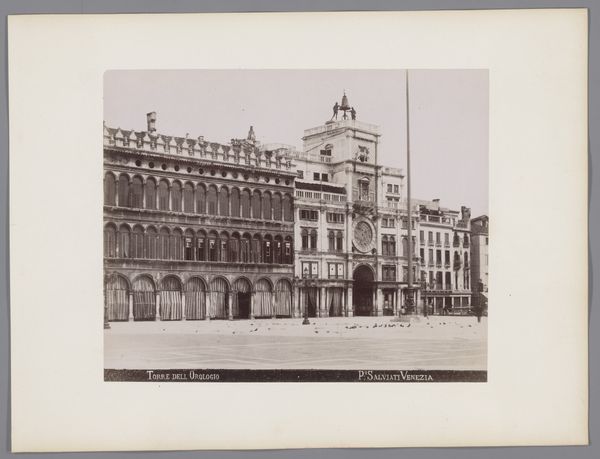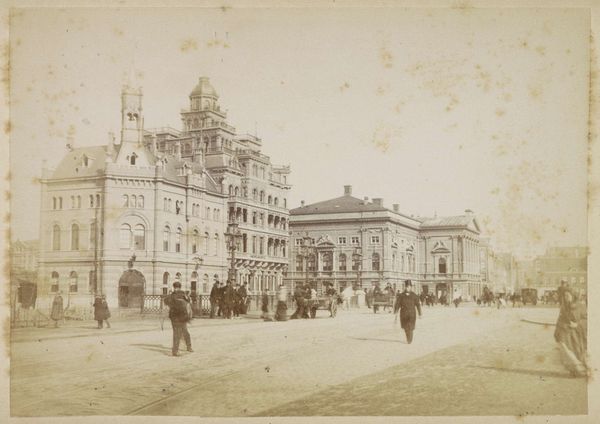![[The Hötel de Ville after the Commune] by Hippolyte-Auguste Collard](/_next/image?url=https%3A%2F%2Fd2w8kbdekdi1gv.cloudfront.net%2FeyJidWNrZXQiOiAiYXJ0ZXJhLWltYWdlcy1idWNrZXQiLCAia2V5IjogImFydHdvcmtzLzcwN2U0MDAyLTIyNjgtNGJiMC1iNmJmLTg2YjBkOGUyNGM3MC83MDdlNDAwMi0yMjY4LTRiYjAtYjZiZi04NmIwZDhlMjRjNzBfZnVsbC5qcGciLCAiZWRpdHMiOiB7InJlc2l6ZSI6IHsid2lkdGgiOiAxOTIwLCAiaGVpZ2h0IjogMTkyMCwgImZpdCI6ICJpbnNpZGUifX19&w=3840&q=75)
[The Hötel de Ville after the Commune] 1871
0:00
0:00
photography, gelatin-silver-print
#
film photography
#
landscape
#
outdoor photograph
#
photography
#
historical photography
#
gelatin-silver-print
#
19th century
#
history-painting
#
street
#
building
Copyright: Public Domain
Curator: Hippolyte-Auguste Collard's photograph, taken in 1871, presents us with "The Hôtel de Ville after the Commune," currently residing at the Metropolitan Museum of Art. Editor: A somber, almost ghostly image. The scale is impressive, yet the emptiness… those gutted windows are intensely haunting. Curator: Indeed. Collard’s lens captures not just a building, but the semiotics of destruction. Notice the architectural language - classical aspirations rendered grotesque through the violence of the Commune. The ruined facade is a potent signifier. Editor: But the "how" of this destruction interests me. Gelatin-silver print—a then-new technology—used to document this devastation. The materials themselves speak of progress attempting to grapple with radical social upheaval, with human action at the center. Look closely; we see labor evidenced in the careful photographic process itself. The composition is an archive, showing us the very matter that embodies labor exploited during this dark era. Curator: The photograph transcends mere documentation. It’s a tableau of power and its ephemerality, a history painting rendered in shades of gray. It reminds me of Piranesi's etchings. The starkness of the sky contrasting with the intricate wreckage… it evokes a powerful emotional response. Editor: Agreed. However, considering the social context of production allows me to more intimately consider the implications of Collard's choices as an artist using this cutting-edge technology to display an empire, even at its demise. Consider its reception: to whom was this presented, how and why? Curator: You’re reminding me of the photographic surveys of the American West; technology applied to very different ends but, fundamentally, about claiming and understanding a landscape. Collard’s "Hôtel de Ville" speaks volumes about the fragility of even the most imposing structures and the histories that shape them. Editor: Collard offers more than just ruins. Through labor and careful materiality, we're witness to the aftermath and aftermaths that reveal power at work. Curator: I leave with a deeper appreciation for the artistry within that stark ruin; an exercise in form and potent historical recall. Editor: Precisely. I appreciate understanding more the cost inherent within material reality and its social consequences, visible here.
Comments
No comments
Be the first to comment and join the conversation on the ultimate creative platform.



